SWM HISTORY 6
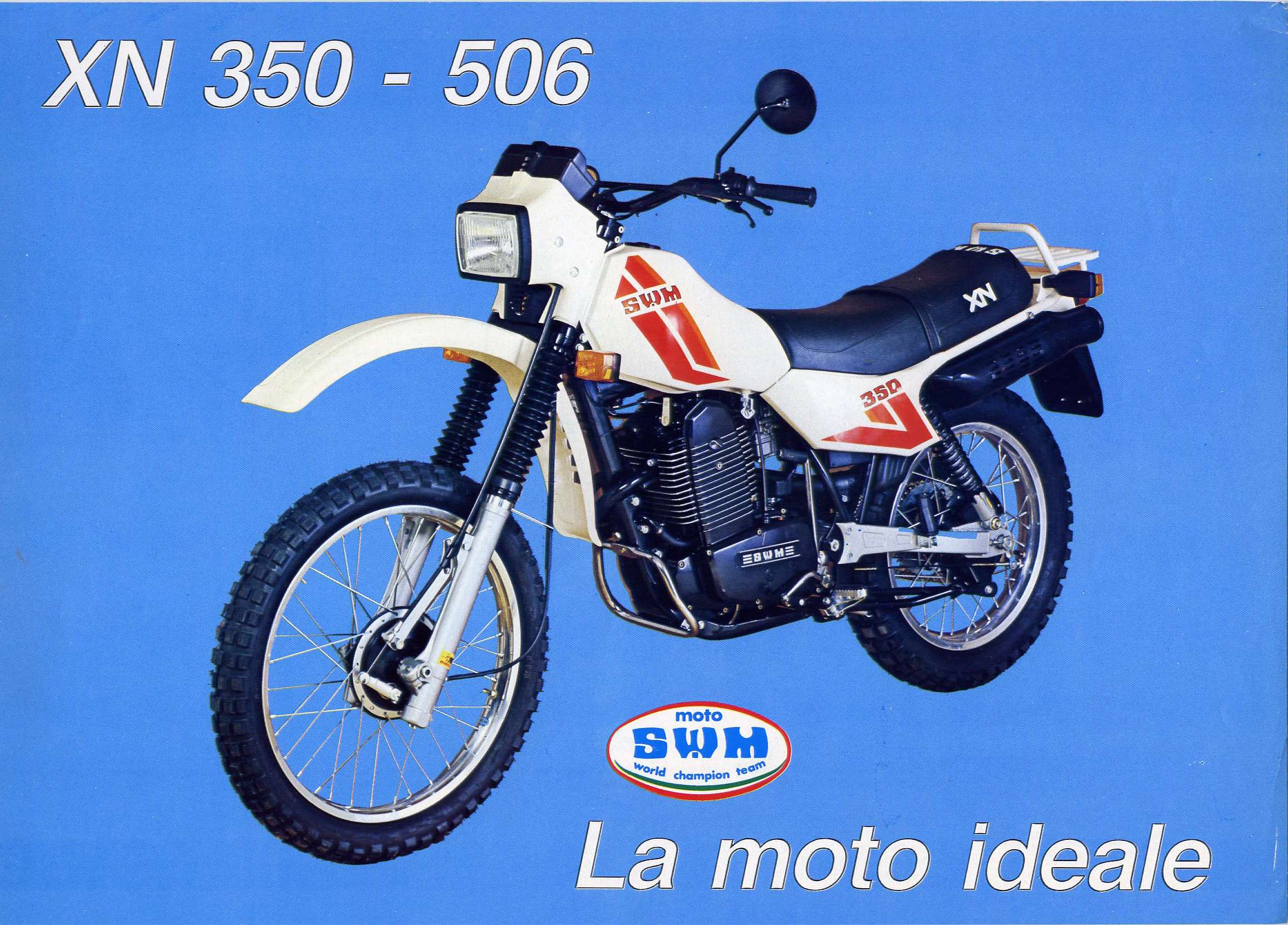
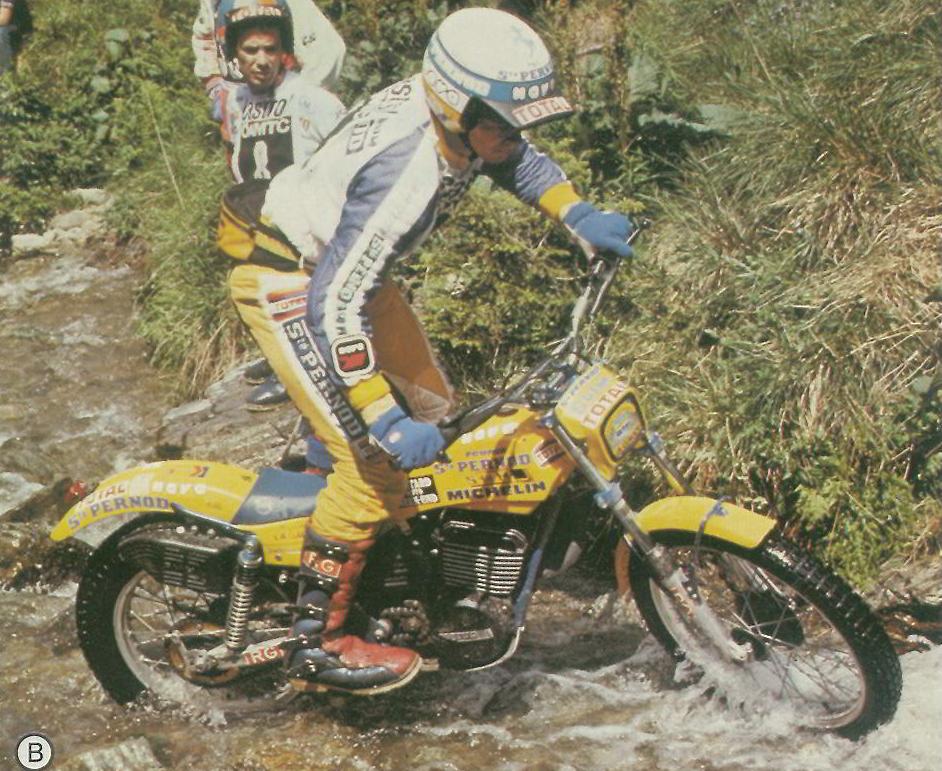
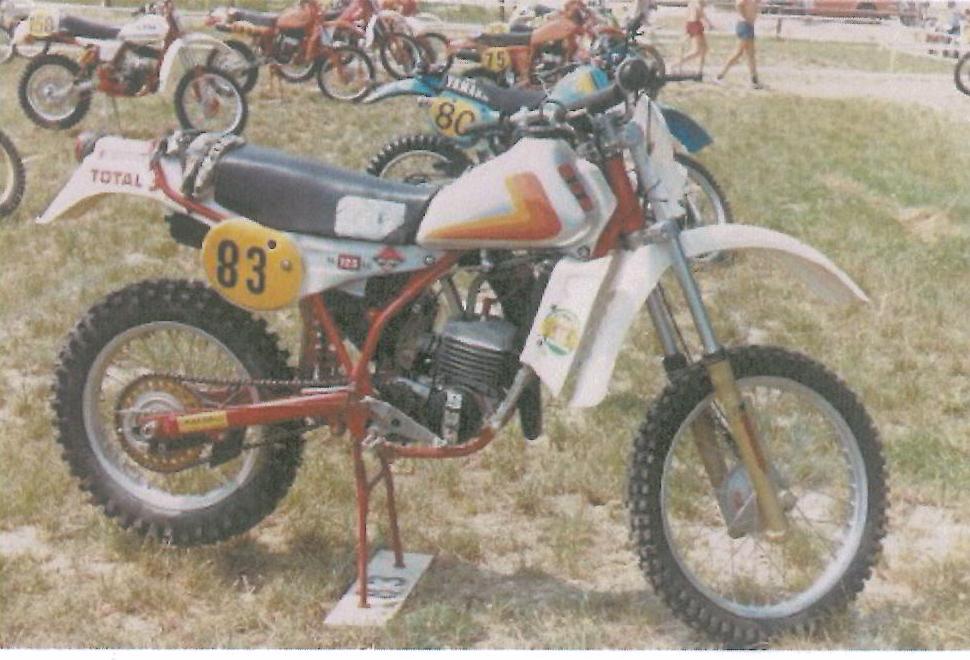
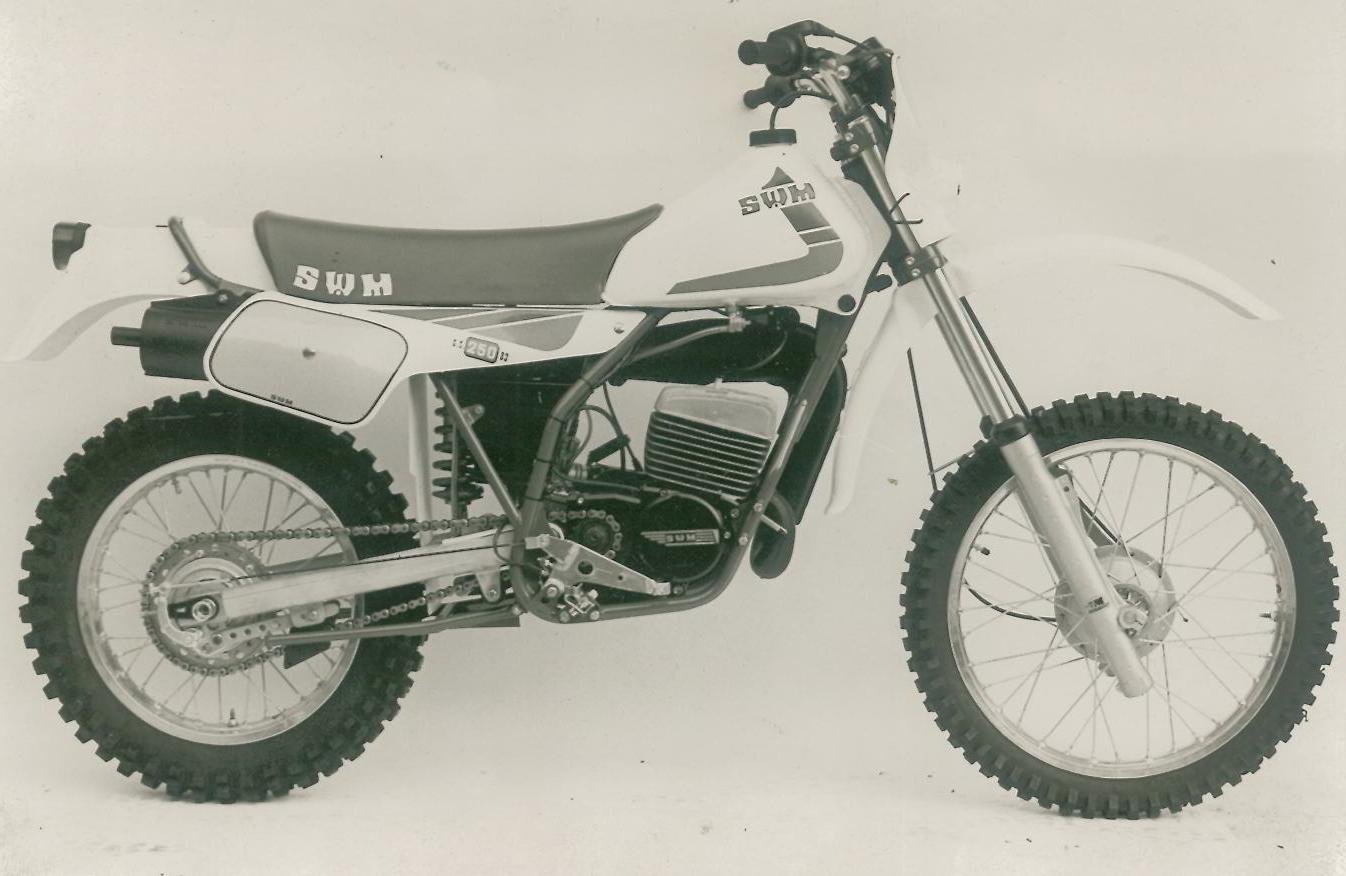
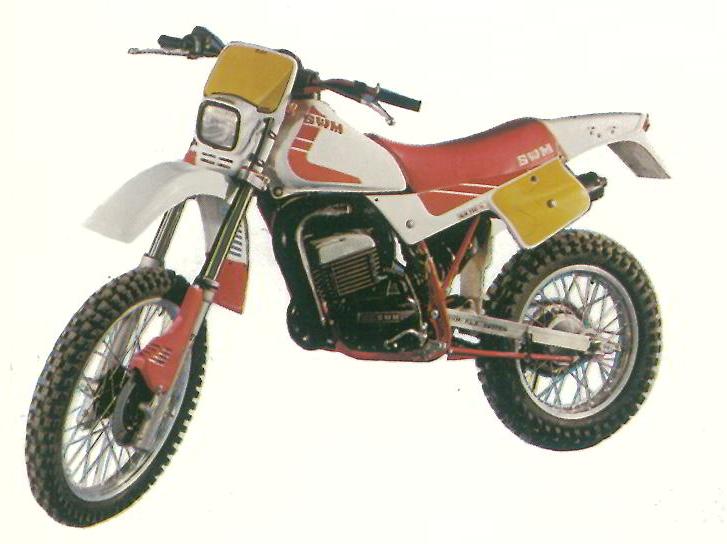
After one year, we return to our history about SWM, and we come in this way to 1982 that had to represent the year of the yet another industrial turn, during which should have been concrete many novelties both for what concerned the models of motorbikes, both for the structures and for the producing units. For the lows of the market first listed, SWM was directed towards a more road production starting with the trial GTS racing and the tourist 124 RZ that unfortunately had few success, the first one because wasn’t implemented by the market and the second because little functional compared to the roads 125 fashionable in those years. Luckily the market of the trial went good and the rest of the production guaranteed a good survival also thanks to the presence of the Lombard firm in all world markets, also the development of the four times had to presage a good future.
Instead, in June of 1982 SWM presented ahead of other brands the enduring 350 and 506 XN, a monocilindrical four-times/ four-valves with distribution tinning belt, very strong, with a very pleasant and personal line.
The production started in September and was a real success, the orders there were immediately and not even the next entrance on the market, at the start of 1983, of the more innovative CAGIVA created many problems since, although his side, the mono-shock-absorbers and the front disc-brake, had like defect the little unreliable. The XN was prepared in two colouring: one yellow and one blue, the other with and red; three were the engines: a 350cc and two 500cc, one more performance and the other quieter.
Identically for all the motorbikes the cyclistic that provided a modular undercarriage with fuel-tank of the built-in oil, Marzocchi staple loading spindle of 38mm of diameter, Marzocchi A73 shock-absorbers, drum brakes of 140mm the former one conical and the back floating, dashboards with rev counter, odometer and various spies, W electrical system, fuel-tank of 10.5 l, double saddle and rack. To the end of 1982 left the second series of XN that was improved thanks to the adoption of the former disc brake and of the tamure of 160mm with cush at the rear.
The unique technical problem that gripped the XN was the filter housing that was quite weak as made with ABS and broke easily, in addition to the upper pulley of the belt transmission of the motor whose clamping had to be occurred continuously.
The reliability production of SWM in 1982 was composed by the series of RS GS TF3, in the cilindrics of 125-175-240-250-347 and 440; in practice the motorbikes were developped for the Six Days of the Elba Island, renewed in the colouring that adopted the orange for the undercarriage, gray for the staple and white for the plastics, more the long saddle that would identify this series. At the suspensions provided, at the forecarriage, a Marzocchi’s leading-axle feather fork, of 35mm for the 125 and 175cc, whereas for all the others was 38mm; at the rear were built, in a very advanced position, some shock-absorbers by Marzocchi AG5 or some Corte and Cosso Compact. The brakes were conical of 140mm. The engines were entrusted to the usual SWM-Rotax, which the 125 built the last version of the cylinder with chrome barrel, five decanting and two boosters on the discharge. The 50-75 and 80 MK GS completed the series, also orange-white that utilized the last version of Minarelli P6 air or air/water, in the vary compositions the suspensions could be: formerly some Marzocchi of 32mm or some Forcelle Italia of 34mm, and at the behind some Marzocchi or some Corte and Cosso. The brakes were conical of 125mm. The cross series was entrusted to the newborn of RS MC TF6 125-250-440; the undercarriage was identical to the TF3 but plus a different staple, behind floating brake of 140mm with reference command on the other side of the undercarriage. Forcella Italia of 38mm with hydraulic disc brake. The colouring was completely orange, with long saddle and behind mudguard of a new design.
Remained virtually unchanged the series of the trial motorbikes that having won the World Championship in 1981 were only renewed in the colouring and in the superstructure: the plastics were white and the undercarriage red for the touring motorcycle TLMW, whereas remained yellow with the undercarriage in blue for the trialist TLNW. In addition, many particulars were realized with injection molds that gave a more industrial imprint to the motorbikes. Remained unchanged the mopeds LA, the code TL 50 and MK 50 RBS, the GTS Racing and the motorbikes for the children. In the athletic field in 1982 to the SWM pointed on the trial that was through a happy time for the House of Rivolta D’Adda thanks to the uncountable victories. At the racing department were prepared were prepared some new motorbikes for all the riders of the team that in that year could count on the presence of Berny Schreiber, who had left the Italjet, and Lampkin, Michaud, Galeazzi and Tosco.
Unfortunately, Bourgat passed to the Fantic Motor attracted by a lavish engagement. In 1982 started also the development of 350 Jumbo, strongly wanted by Schreiber who gave his size, well suited to govern the motorbike of big cylindrical. Starting from the basis of the reliability motor of 347 extracted a trial propulsor very powerful, but also scorbutic and more suitable to some professional riders; then, to sweeten, the strips were removed and the steps were closed in the carter. To solve the problem of the clutch, that was very hard to pull for the trialist use, was adopted a solution that provided by the insertion of an arm of an additional lever between the command on the handlebars and the motor. In practice was mounted up of the head of the motor at commanded leverage by the clutch lever, this one in turn sent the command to the carter clutch, halving the effort. Cycling was realized a new undercarriage more light and suited to accommodated the motor of 350cc; it completed the structure the staple in aluminium, the Betor staple of 38mm and the 2 shock-absorbers Corte and Cosso. It remain unchanged the brakes that utilized the same drums of the TLNW, instead was completely redesigned the graphic that, maintaining the yellow/blue colouring, had to give a clear sign of power to the motorbike. At the end of the season the SWM team conquered for the third consecutive year the Italian title with Galeazzi and he came second in the World Championship with Schreiber who at the start of the season paid the price of the unfamiliarity with the new motorbike, then falling to catch up the gap with the strong Eddie Leyeune and his Honda 360 four-times prototype. It followed: Michaud 5° and Galeazzi 6°, the best of the Italians. At the Six Days in Scotland in 1982, SWM came 1° with Schreiber and won like industry.
A little bit fewer luckily were the agonistic season of endurance that in 1982 had in the team Luigino Medardo in the 125cc and Alessandro Gritti in the 250cc. The race department had to renew his machines so in that year made a big effort to prepare some new motorbikes. In the waiting of the realization of the undercarriages provided of mono-shock-absorbers, at the start of the year, Medardo used the prototype of the water RSGS 126, presented at the “Motorshow” in Milan, whereas Gritti used a 250 TF3 slightly modified in the cyclistic and with a new staple made in aluminium.
Unfortunately, here started the first diatribes in SWM, because Vergani did not believe in the effectiveness of the first systems with mono-shock-absorbers that since some years equipped the Japans motorbikes, whereas the market wanted this type of suspensions, the water-cooling and the twin cam brakes.
Pressed by the commercial part he realized a double leverage controlled by rods, like the one of Suzuki, but of low reliability and progression. The new motorbikes had a difficult development and underwent many modifies trying to reach the appropriate competitively, and for this reason, in addition to the new undercarriage, was utilized the breaking disc system of Brembo, the posterior floating drum and the new fuel tank in aluminium, whereas remained unchanged the engines with the 126 water and the 125 air. At the end of the season Gritti came ???
The scarcity of the success of 1982 pushed the management to find new stimuli, renewing the reliability compartment. The race department that had just largely reduced was completely resigned and the employees no longer valid were hijacked who to the testing quality control of the end of the production and who to the experiences and prototyping, whereas the pure management of the tests-development of the motorbikes and of the competitions was contracted to an external structure, but, directly followed by an internal charge that was identified in the valid engineer Trussardi Giannino. Since the development of the motorbikes of 1982 was, a real washout was completely abandoned and they decided to face a new way. This maybe created the first disagreements of Vergani who, seeing subtract the development of the reliability motorbikes, pointed all of his effort to the development of the four-times where clashed with the equal fastidiousness and precision of the good Marietto Fumagalli who was put to direct the tests and the development of XN.
In function of the new engines in 1982 was concluded an agreement with the engineer Trivelli of TAU motors of 125cc, just used on the Valenti and the Kramit, that, though sin, of build quality, presented a good design basis that went only related to make it more reliable and industrially. The first approaches with the TAU motor were made by Trussardi who tested it for some months at the test bench, whereas with another motor was realized a motorbike on the basis of the cyclistic of 126 GS double shock-absorber for Mauro Sironi who would have tasted it on the field. The contacts with TAU motors brought in SWM also Antonio Chinello who, working for the race department of Kramit, had just some contacts with the engineer Trivelli. In addition, Antonio was known so well because his father was a concessionary of SWM since time and he had taken part of the “Moto Club 2R-SWM” of Palazzolo Milanese for many years that was fallowed by the Sironi Family.
So was concluded an agreement with Chimoto of Senago for the external management of the competitions and of the competition’s motorbike of the two riders whom, for the 1983, would have been Medardo in the 125cc and Fasola in the 250cc, more Sironi Mauro who would continue to test new solutions. To realize the new undercarriage of off-road shall be referred some external technicians; at first was examined the undercarriage of Valenti, then abandoned because more suitable for the only motocross use, then we chose for a collaboration with ??? Of Parma, that according to many was a valid loom manufacturer and engineer because it followed with excellent results the Honda of the Italian Championship of cross. Totally, he, didn’t invented nothing, but did what in SWM didn’t want to do, or merely to take the valid triangulature of the forecarriage, of the SWM undercarriage, used by Gritti, and to replace completely the rear, putting none other that the same kinematics present on the Honda cross of 1982.
The first tests on the new motorbike that would have named RS-GS-S1, started in February 1983 and then were realized the first two motorbikes, just in time to the first competition of the championship, a 125cc powered TAU for Medardo and a 250cc Rotax air for Fasola. Altogether, the motorbike was not wicked and for the reliability enjoyed of good manoeuvrability and easy driving; sure was the mono-cushioning that was used that being a Corte and Cosso had his limits and however the same Honda, in 1983, had further modified his kinematics, to make more progressive. However during all the season the motorbikes behaved more that is unsatisfactory, and as soon was reached the right degree of reliability were put in production to recover the more possible the market by now lost because of the debacle of 1982. strongly competitive speaking, they knew that 1983 had to be a year of transaction in prospective of preparing a more strong team for 1984, perhaps with the help of some foreign riders. Nonetheless, Medardo came ??? and Fasola because of its inconstancy???.
Quiet another story for the trial department that in 1983 adopted the new motorbikes with Jambo cyclistic that after the initial tests regularly entered in production. The motorbikes, realized in the displacements of 125, 240 and 320cc were realized starting from the basis of Jumbo 350, remain the same structure of the frame with staple made in aluminium and the same superstructures. Much attention was dedicated to the clutch that, like all knows, was a little bit the Achilles heel of the SWM of trial, as hard enough. Initially was adopted the solution of the 350 that included the insertion of an arm leverage extra between the command of the handlebars and the motor, but the problem was finally resolved to the end of the year with the modify of the spiral pusher on the carter clutch, that provided the use of 3 big spheres that worked for polling on the inclined plan of the carter and no more for the creep of the 2 inclined planes. The thick team SWM- Trial of 1983 was always captained by the valid Sportive Director Kuciukian assisted in the technical part by the good Dario Seregni and by Mangano. The top riders were: Berney Schreiber, who, although the papers in to point to the victory of the World Championship, had to be contend again of the 2° place, because of the unbeatable coupled Leyune-Honda, winning but the Open-USA Championship and so strengthen the American market of SWM. Made the following: Michaud that in the World Championship came 3° and won the French Championship; Cordonier 1° in the World Championship and 2° in the Belgian Championship and Galeazzi 10° in the World Championship and again 1° in the Italian one.
For what concerned the industrial aspect of SWM, for some market’s questions, the commercial structure continued to ask for the same investment to realize some new motors, seeing that the actual began to become obsolete and in Rotax, you could not get much. The 126 dual admissions were not very competitive, the 250 continued to be air and the new 500 were preparing born already old passed. Also the Industrial strategy of SWM was directing to a more road production, thinking above all to the big displacements of 500 and 750cc, the advent of four-times moneylender of Rotax permitted the first step and in fact around this motor were prepared some valid prototypes, whereas the management weaving relationship for any collaborations with some notes Japanese and Asian firms. Some recent contacts at government level offered the opportunity of realizing some industrial settlements in some areas of the South Italy that the govern intended develop providing funding and facilities. In this way was designed the realisation of three establishments SWM in Potenza: a firm of assembly for street motorbikes, a firm that would produce the motor for this one and the others, and a foundry. The project was very ambitions and challenging but was also widely supported by the govern of that time that, after have read the financial and technical papers, had given approval. This would allow of transforming SWM worth in a unit of production for the motorbikes exclusively of off-roads and of development, search and prototyping for the motorbikes of the whole group.
The 48° edition of the International fair of the “Ciclo e Motociclo” of 1983 of 1983 offered the opportunity to renewed and increase further the range SWM and above all direct it to the request of the market that begin to be increasingly direct forwards motorbikes enduring, but of clear imprint street.
The lucky production of endurance XN 4-times that, in the last version with disc brake had more success, allowed on further development of that technology of models to the small displacements.
For the moment we stop here, from this point, born unfortunately the decline of SWM and since is another history we truckle that in the next chapter.


